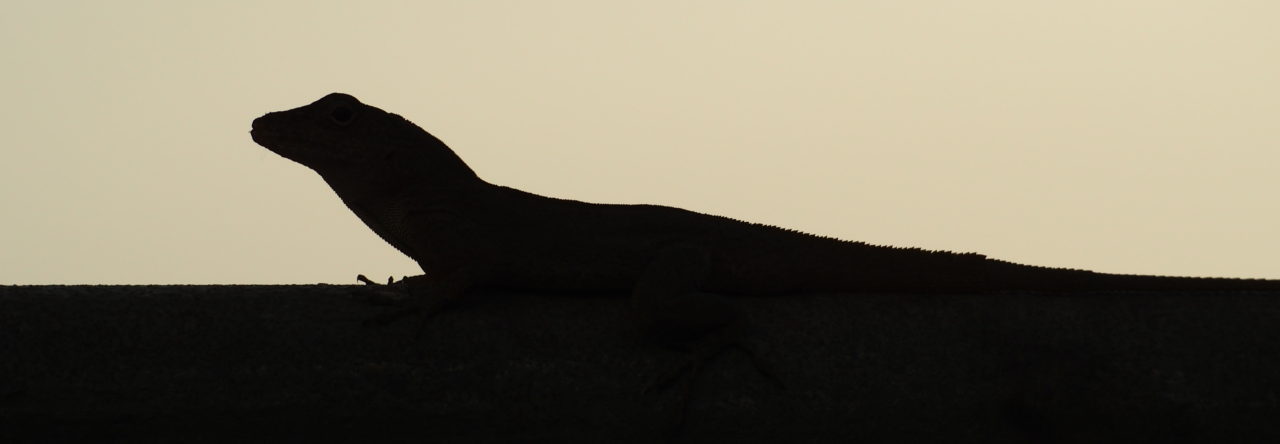If you’ve ever had a lizard chomp down on your finger, you know that lizard skulls are well-designed for biting!

Ross et al. showed that Anolis lizards have a skull optimized for feeding. Photo of A. evermanni by Michele Johnson.
Dr. Callum Ross, a biomechanist focusing on feeding systems at the University of Chicago, presented a talk at SICB on Monday describing differences in in vivo bone strain between mammal and lizard skulls. In mammals, the shape of the skull causes strain during feeding to be exerted differently on different bones: the frontal and parietal bones, those that cover the human forehead and back of the head, experience very low strains compared to the maxilla and mandible and zygomatic arches, the bones that support the jaw. Because of this variation in force distribution, the top of the mammalian skull is not optimized to dissipate feeding forces. In contrast, the structuring of lizard skulls is dramatically different. Whereas the mammalian skull is designed to protect the large mammalian brains, lizard skulls contain much smaller brains . To determine how strain gradients are distributed across lizard skulls during feeding, Ross measured strain magnitude in vivo across four lizard species, Tupinambis merianae, Anolis equestris, Gecko gecko, and Iguana iguana. Ross and his colleagues found that lizards experience much higher strains on top of the cranium, the same place at which mammals experienced very low strain, demonstrating a skull design that is more optimized for feeding. He also found that maximum frontal bone sheer strain was highest in Anolis equestris! These results are amazing because they demonstrate a clear morphological trade-off between optimization for feeding in lizards versus optimization for protecting the large mammalian brain.
Note: This post was written by Bonnie Kircher, a graduate student studying anole development in Marty Cohn’s lab at the University of Florida.










